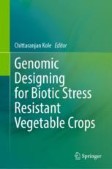Search
Search Results
-
Transgenic merA and merB expression reduces mercury contamination in vegetables and grains grown in mercury-contaminated soil
Key messageArabidopsis, tobacco, tomato and rice withmerA /merB expressed reduced mercury concentration of leaves, fruits or grains. These...
-
Horizontal gene transfer of the Mer operon is associated with large effects on the transcriptome and increased tolerance to mercury in nitrogen-fixing bacteria
BackgroundMercury (Hg) is highly toxic and has the potential to cause severe health problems for humans and foraging animals when transported into...

-
Characterization of Mercury-Resistant Rhizobacteria for Plant Growth Promotion: An In Vitro and In Silico Approach
In this study, a total 30 rhizobacterial isolates were screened out based on resistance against different concentrations of mercuric chloride (HgCl 2 ),...

-
Function of the mdxR gene encoding a novel regulator for carbohydrate metabolism and sporulation in Bacillus subtilis 168
The mdx R gene located upstream of mdx D , encoding a maltogenic amylase, has been annotated as a member of LacI-type transcriptional regulator in Bacillu...

-
Mining-impacted rice paddies select for Archaeal methylators and reveal a putative (Archaeal) regulator of mercury methylation
Methylmercury (MeHg) is a microbially produced neurotoxin derived from inorganic mercury (Hg), which accumulation in rice represents a major health...

-
Microbial Interactions with the Mercury Cycle
All forms of mercury (Hg) are toxic to the environment and to all organisms, particularly the organometallic neurotoxin methylmercury. Microbes play...
-
Transcriptomic evidence for versatile metabolic activities of mercury cycling microorganisms in brackish microbial mats
Methylmercury, biomagnifying through food chains, is highly toxic for aquatic life. Its production and degradation are largely driven by microbial...

-
Bioremediation of environments contaminated with mercury. Present and perspectives
Mercury is a highly toxic heavy metal whose emission sources can be both natural and the result of anthropic activity. Its polluting action on soils,...

-
Bacterial Metal-Scavengers Newly Isolated from Indonesian Gold Mine-Impacted Area: Bacillus altitudinis MIM12 as Novel Tools for Bio-Transformation of Mercury
Selikat river, located in the north part of Bengkulu Province, Indonesia, has critical environmental and ecological issues of contamination by...

-
Phytoremediation: a transgenic perspective in omics era
Phytoremediation is an environmental safety strategy that might serve as a viable preventative approach to reduce soil contamination in a...

-
Mercury methylation by metabolically versatile and cosmopolitan marine bacteria
Microbes transform aqueous mercury (Hg) into methylmercury (MeHg), a potent neurotoxin that accumulates in terrestrial and marine food webs, with...

-
Intestinal microbiota protects against methylmercury-induced neurotoxicity
Methylmercury (MeHg) remains a global public health issue because of its frequent presence in human food sources obtained from the water. The...

-
Winogradskyella luteola sp.nov., Erythrobacter ani sp. nov., and Erythrobacter crassostrea sp.nov., isolated from the hemolymph of the Pacific Oyster Crassostrea gigas
Three new bacterial strains, WHY3 T , WH131 T , and WH158 T , were isolated and described from the hemolymph of the Pacific oyster Crassostrea gigas ...

-
Heavy Metals Remediation in Plants Through Genetic Tools: A Boon for Mankind
There have been a lot of instances where the plants are getting affected by heavy metals and metalloid toxicity. Due to contamination of heavy metals...
-
Heavy Metals as Catalysts in the Evolution of Antimicrobial Resistance and the Mechanisms Underpinning Co-selection
The menace caused by antibiotic resistance in bacteria is acknowledged on a global scale. Concerns over the same are increasing because of the...

-
Synergistic interactions of assorted ameliorating agents to enhance the potential of heavy metal phytoremediation
Pollution by toxic heavy metals creates a significant impact on the biotic community of the ecosystem. Nowadays, a solution to this problem is an...

-
Genomic analysis of Listeria monocytogenes from US food processing environments reveals a high prevalence of QAC efflux genes but limited evidence of their contribution to environmental persistence
BackgroundQuaternary ammonium compound (QAC) efflux genes increase the minimum inhibitory concentration of Listeria monocytogenes ( Lm ) to...

-
Biotic Stresses in Cucurbits: Status, Challenges, Breeding and Genetic Tools to Enhance Resistance
Cucurbits are a major vegetable crop that contributes significantly to world vegetable output and nutritional security. In many circumstances, biotic...
-
Description of two nitrogen-fixing bacteria, Geomonas fuzhouensis sp. nov. and Geomonas agri sp. nov., isolated from paddy soils
Two strictly anaerobic nitrogen-fixing strains, designated RG17 T and RG53 T , were isolated from paddy soils in China. Strains RG17 T and RG53 T showed...

-
Genetic engineering of plants for phytoremediation: advances and challenges
Heavy metal and metalloid contamination of the environment due to natural processes, industrialization, and anthropogenic activities pose a serious...

